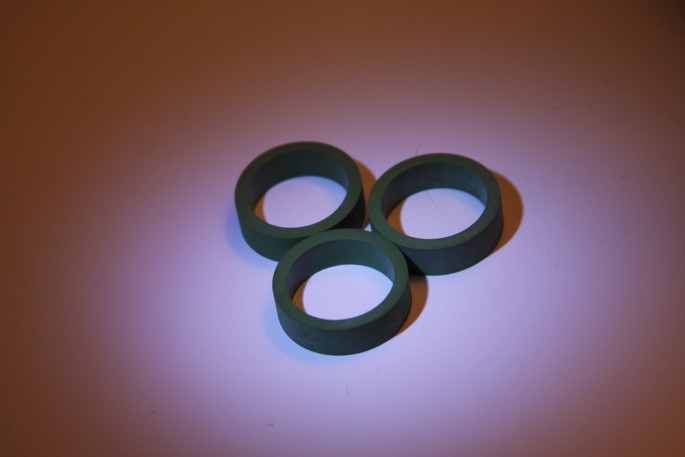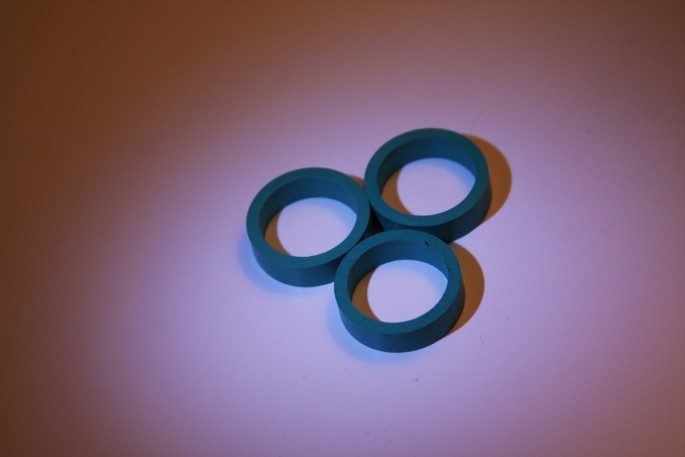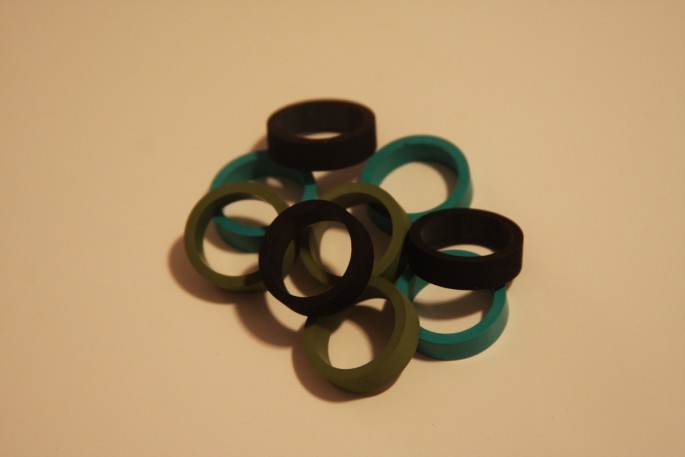Last week we cruised up to Lancaster, New York and spent the day at Jiffy-Tite’s world headquarters. While we are going give you a behind the scenes look at one of the more incredible manufacturing facilities we have ever been to, today we’re going to talk a little Jiffy-Tite tech with you and make sure you understand how to properly spec the type of seals that should be in the fittings you are ordering for your application. All seals are not created equal and there are three different varieties offered by Jiffy-Tite that cover virtually every liquid you could possible consider but not all of them work for what you might be doing. For instance if you are using these fittings on a hydraulic clutch line that will be flowing brake fluid through it to the throwout bearing you cannot use the same style of seal that would be used if the fitting were going to be flowing transmission fluid through it.
The guy we spent the day with at Jiffy-Tite world HQ was Duane LeFleur the Motorsports Manager for the company. Duane is an experience drag racer and a lifelong gearhead that has nearly two decades of experience at the company. He championed the cause for a motorsports division at Jiffy-Tite many years ago and he “puts his money where his mouth is” by spending the better part of the year on the road racing his own NHRA Super Gas car or being in front of racers, car builders, and prospective customers at shows and events from coast to coast.
Thankfully our schedules aligned and we were able to spend the day talking turkey, fittings, and the types of tech questions that he often fields. When we got to that subject, Duane was 100% sure what the number one thing he wanted to talk to prospective customers about, “Seals,” he said with stern look. “The biggest thing that people need to be sure of when they order their fittings is that the proper seals are in place,” LeFleur said. “If properly spec’d with the right seals, our customers will have a virtual lifetime of leak free operation.”
There are two scenarios that can give people trouble (we’ll talk about number two next week) but the most commonly overlooked thing when ordering our product is the seal type.” As a high level OEM supplier, the quality control standards and manufacturing technology involved in making these parts is mind boggling. LeFleur’s confidence in the product is not misplaced. We’re sure of that!
So what are the seal options? Duane explained, “We offer three types of seals. There’s an FKM (Editor’s note: Viton, except no one can call it that because DuPont put the name on lockdown) type seal, a Nitrile type seal, and a EPDM seal. All three of these things are good at sealing but they are good at sealing different types of liquids.”
The company has a few guards in place to help identify what type of seal your fittings are equipped with. First there’s color. All three are a different hue, and second there’s the part number of the fittings themselves. If you are specifying an FKM seal there will be no designated letter in the part number for the seal. If you specify a nitrile (NBR) seal the part number will contain a B in it and if you are ordering a EPDM seal, the part number will have an F in it.
Now, here’s a look at the three different seals and what they are good for!
These darker green seals are the FKM material which lots of us regular guys would refer to as Viton but due to DuPont’s stance on people using the term, you won’t see that name in any catalog or advertisement anymore. These are very versatile in the fact that they can handle: oil, water, gasoline, transmission fluid, E85, and diesel fuel.
These more turquoise blue seals are the NBR or nitrile seals and they are recommended for alcohol fuel as well as VP Racing Fuels Q16 racing gas. While they are a bit limited on their application it is good to know that these seals are going to handle your fuel of choice (so long as it is alky or Q16) without degrading. Oh, and how serious a car can run these fittings in its fuel system and still get fed enough fuel? NHRA pro stockers do it so your car will likely be A-OK on the street! Remember, ordering these you should have a B in your part number!
These black seals are the EPDM or Eethylene Propylene seals. They are pretty heavy duty as they can handle nitromethane, methanol (methyl alcohol), brake fluid, and ethanol. You may be wondering why Jiffy-Tite would specify these seals for brake fluid even though the company is explicit in its wishes that these fittings not be used on braking systems, right? Most hydraulic clutches use brake fluid as their fluid of choice so that is a big one. Remember, if you want these your part number should have an F in it.
Ok, now that you know the seals and why they have three different types, it is time to put your knowledge to the test on Jiffy-Tite’s awesome fitting builder application. Click on the link below and build some fittings! The first question you’ll answer is the type of fluid that’ll be heading through them. That is how important it is to get that step right.
CLICK HERE FOR THE JIFFY-TITE FITTING BUILDER
Jiffy-Tite manufactures their products in a facility that is second to none, using materials that are second to none. Make sure that when you get your fittings they are the ones designed to do the job you are asking them to do. Lots of hard work goes into making your part right…use them the right way!




























